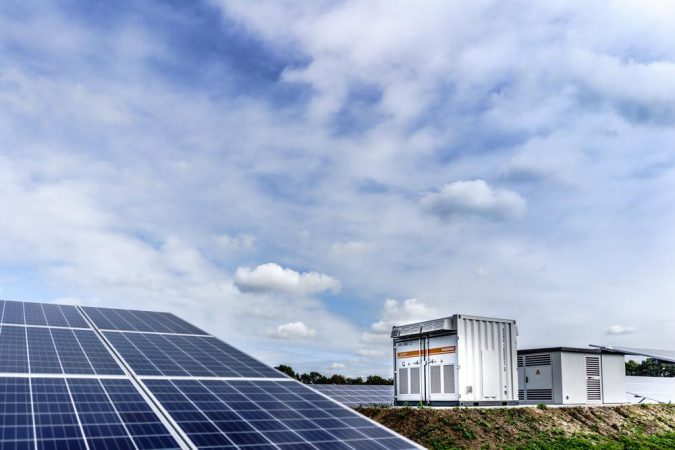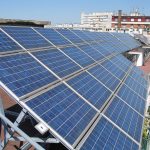
How much does a home energy storage cost? Home energy storage has emerged as a tangible embodiment of the ideas of distributed energy and smart consumption that have been circulating in the air for many years. More and more people choose energy security, responsibility for the environment and reasonable consumption.
Our task is to provide them with the latest energy storage technologies and technical independence. The world is developing green energy, renewable energy sources, markets are developing at a tremendous pace. Technologies are transforming, thanks to the evolution of electric transport, the cost of batteries has fallen and storage technology has also become available to the consumer market.
- https://www.edu-projekt.pl/ile-zarabia-kierowca-autolawety/
- https://www.grajpek.com.pl/jaka-stacja-meteorologiczna-bedzie-najlepsza/
- https://www.enen.pl/gdzie-pracuje-ortopeda/
The use of home energy storage
The accumulation of electricity solves many problems: it is not only stockpiling and replacing fuel generators. The home energy storage plays the role of a full-fledged consumption node, stabilizes the voltage. In the future, storage devices will be able to act as balancing nodes and control power flows not only for home power systems, but for the entire power system.
The idea was therefore synthesized from the obvious needs of the market. Manufacturers of batteries constituting home energy storage create a convenient, understandable and effective product. Simply put, the battery is a kind of power bank for the home. We carry portable smartphone chargers with us, so why not have something similar for the whole house or apartment. Devices that can be controlled by an app.
What gives a home energy storage?
- Guaranteed power in the event of power outages. Saving money (you can save electricity generated using solar panels, and everyone knows that electricity is twice as cheap at night, users can store energy at night and use it during the day, thus reducing their costs).
- Increasing the power of the house (home energy storage can significantly increase the power of the house without the need to obtain it from the grid).
- Environmentally friendly (does not produce any harmful emissions).
- Quiet (battery is quiet).
- Ergonomics (the energy store easily fits into the interior of the house, it does not need a separate room).
The home energy storage can be used as a backup generator or fully supply the house with electricity. In the absence of a power source (solar energy), it is able to power a medium-sized house during the day.
A notable feature is that the battery can accumulate energy from the grid at a time when its minimum cost is determined by the supplier’s tariffs. This can be done via remote access in the original smartphone app.
How much does a home energy storage cost?
The capacity of home energy storages ranges from 3 kWh to 13.5 kWh and their purchase price ranges from PLN 15,000 to PLN 50,000. It depends on the number of modules that are present in a given set and the brand. The cost of a 5kWh battery oscillates around PLN 14,000 and a 10 KWh battery around PLN 25,000 to PLN 30,000.
How does a home energy storage system work?
-
-
-
-
- The storage device receives the collected energy from the solar panels. It converts it to alternating current using the built-in inverter. It was not in the first generation models. It was introduced as an accessory and mounted side by side.
- The energy storage installation has several operating modes for different household needs. It turns off when it reaches 98-100% capacity and turns on only when the network is turned off.
- Self-powered. It increases the receipt of energy from solar panels and reduces its return to the grid. time control (balanced) – balance function.
- adjustable parameter. You can set a peak time for energy consumption and the drive will compensate for this at the expense of its own pre-booked.
- Time control (cost saving) – time control. It is configured for accumulation and return by setting time intervals on them (receipt, consumption).
-
-
-
The principle of operation of a home energy storage
The principle of operation is that in the presence of an external power source, the inverter transfers the voltage to the receivers, while the built-in charger charges the battery. In the event of a power failure, the inverter immediately switches to battery power and converts the DC voltage to AC.
Storage systems for a private house are able to provide energy for 24-48 hours. This indicator depends on the completeness of the charge, the number of consumers and the capacity of the battery.
The following types of batteries are used:
-
-
-
-
- Lead-acid. Affordable, hold a charge well and reach full capacity quickly.
- Li-ion. Light weight, low self-discharge and large capacity. The choice is determined by your own needs and financial capabilities.
-
-
-
Why are home energy storages a profitable investment?
Batteries as home energy storage are particularly important for the integration of solar and wind power plants into the energy system.
In particular, the peak of solar production due to high solar activity occurs in the middle of the day, when the level of electricity consumption in the power system usually decreases compared to the morning and evening consumption peaks.
Energy storage will allow electricity to be accumulated in hours when it can be produced above the current level of consumption, and returned to the power system in hours when consumption increases. Thus, the security of the energy system (corresponding to the levels of electricity production/consumption) will be ensured when integrating large amounts of solar and wind power plants with the energy system.
Energy storage systems play a key role in creating a flexible energy supply system because they can store and release energy exactly when it is needed.







